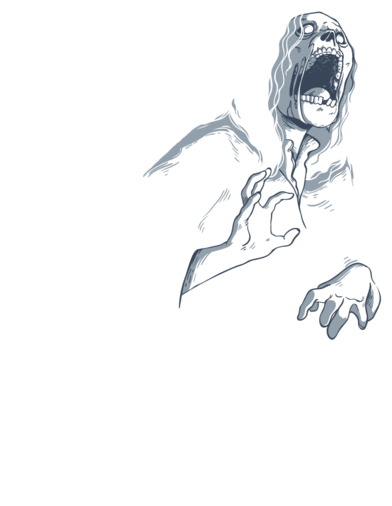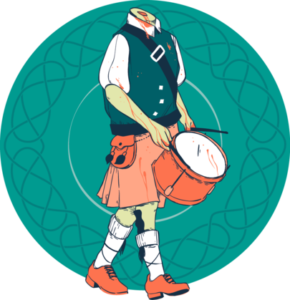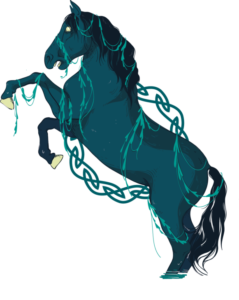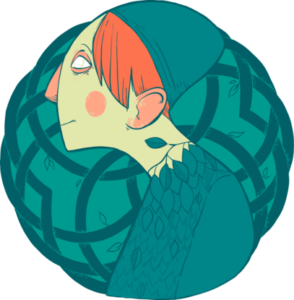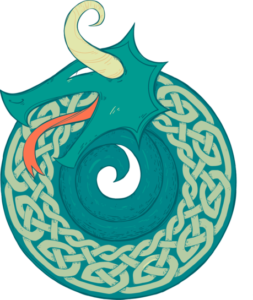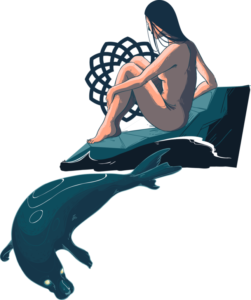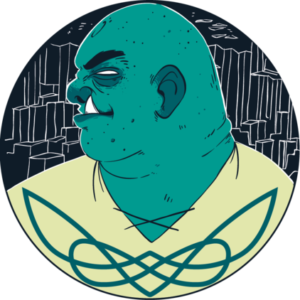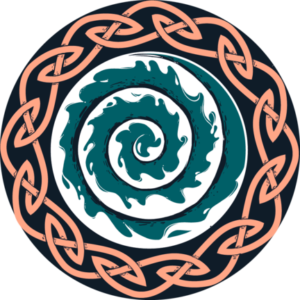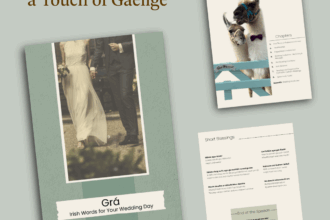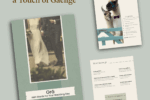In Scotland, you can expect the unexpected. Be it in the tallest tower of an imposing castle, the darkest depths of a secluded forest, or just below the surface of a murky loch, it’s not unusual to experience something that just can’t be explained.
Our folklore is peppered with accounts of peculiar events and uncanny, sometimes sinister tales, originating from long-forgotten times. Delve into our eeriest myths and legends and you’ll encounter stories of curious, other worldly beings and tormented ghouls and ghosts.
But the question is, what do you believe? Visit the places where these events are said to have taken place, and decide for yourself!
THE Mysterious Underwold of Edinburgh
Buried beneath the Old Town of Edinburgh lies a subterranean labyrinth of streets and chambers where tales of strange phenomenon and hauntings abound, including one particular phantom whose fame has travelled throughout the world.
As you descend the gloomy depths of Mary King’s Close, enter the vanished world of 17th century Edinburgh. Here was once a bustling neighbourhood open to the sky where prosperous merchants would trade their wares. It also served as a refuge for the city’s countless slum dwellers where crime and even murder were rife. The march of time would see the close gradually become submerged by the structures you see today on the Royal Mile. But this was not what sealed its ultimate demise.
In 1645 a deadly scourge spread like wildfire through the city – the bubonic plague. Urban legend has that in a desperate bid to halt the contagion the infected were quarantined within the walled up vaults and left to perish. One of the unfortunate souls who met this miserable fate is thought to be ‘Wee Annie’, the spirit of a sickly young girl separated from her family and crying for her favourite doll. Step inside her room filled with piles of dolls and teddy bears left by kindly visitors over the years and wait. Stay still and you might feel a sudden chill in the air, an insistent tug on the hem of your coat, or even a little invisible hand grasping for yours in the dark.
THE Headless Drummer of Edinburgh Castle
Sometimes in the dead of night or at dawn or dusk, the distant sound of drumming can be heard reverberating around the fortress of Edinburgh Castle. Take care, for it means an ancient harbinger of doom is approaching.
No one knows exactly who or what the source of this ghostly sound is, but legends tell us it belongs to one of Edinburgh Castle’s infamous phantoms: the Headless Drummer Boy. His identity and the story behind his decapitation remain a mystery, but it is said he made his first appearance in 1650. This was the fateful year Oliver Cromwell launched his invasion of Scotland which culminated in the capture of the castle following a three month siege. Ever since then the drummer has been seen as bad omen whose apparition foretells imminent disaster for the castle.
It has been many centuries since the castle faced an attack by an invading army, or any other sinister force for the matter, which might well explain why the drummer has not been sighted for centuries. But still, during quiet times of the day, once the throngs of tourists have dissipated, the unmistakable ‘rat-a-tat-tat’ sound of drums is heard, seemingly emanating from all directions, without a mortal drummer to be seen or found. Perhaps this is an occasional reminder from the drummer that though he is unseen he is never far away, and continues his vigil over the castle and its city
THE Monster of Glamis Castle
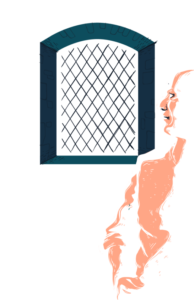
Glamis Castle has played host to its fair share of ghouls and paranormal phenomena over the centuries, but its most famous and peculiar tale is that of its monster.
The mystery began the night of 21 October 1821 when Lord Glamis and his wife welcomed the birth of a son and heir, Thomas. Tragically, their joy soon turned despair when the child died shortly afterwards. But rumours soon spread that the boy was in fact alive but hideously deformed, and to spare the family from disgrace was being raised in a secret chamber in Glamis. Legend had it that when each subsequent heir to the Earldom came of age, they were brought to this room concealed deep within the fortified walls of the castle. Here the terrible truth was unveiled – a creature of almost superhuman strength, no neck, and a barrel-shaped torso with tiny limbs covered in hair. No member of the family living or dead has ever acknowledged its existence – except perhaps one. In a letter from 1870, the sister-in-law of the twelfth earl repeats a disturbing confession made by him to his wife about what both had light-heartedly referred to as the ‘family mystery’
“My dearest. I have been into the room; I have heard the secret; and if you wish to please me you will never mention the subject to me again.’
Take care down by the water. There is a dangerous creature that roams the lonely lochs and rivers of Scotland. A conniving beast, it lures its unsuspecting victims to the water only to mercilessly drown them.
This supernatural breed has even been immortalised in art. At The Helix, you will find two immense, 30-metre-high sculptures which pay tribute to the Celtic myth of the water horse.
But beware the real thing. Legend has it that the kelpie emits a plaintive cry eerily reminiscent of a drowning man or women to attract its prey. Others say it will sometimes appear at the water’s edge appearing gentle and bereft, urging onlookers to join it for a ride on its back before violently plunging them down to a watery grave. The secret to taming the kelpie is its bridle – if you can manage to tear it off, the horse is subject to your command.
For proof of their existence look no further than the grounds of the ruined Vayne Castle in Angus. Here you will find a hoof-shaped imprint on sandstone near the river bank left behind by this supernatural predator. It is said that in the early morning or at dusk, if you are still and listen carefully enough, you might just catch its mournful song floating along the gently flowing current. But venture no further than that, unless you wish to meet your doom.
GHILLIE DHU
What is small, invisible and lurks in the woods? The Ghillie Dhu, of course! He is a male faerie who lives deep within Scottish forests, particularly in birch trees. He lives alone and camouflages himself from humans, using leaves and moss for clothing.
The Ghillie Dhu only comes out at night. Are you afraid of walking through a deep forest in the dark? We don’t blame you. The Ghillie Dhu, or the ‘dark-haired lad’ in Gaelic, gets very angry if adults trespass upon his forest and he severely punishes those that interfere with his precious leafy home.
However, this wild tree sprite is also known for his kindness, but only to younger explorers of his woodlands. In one famous tale in Scottish folklore, the Ghillie Dhu came across a frightened local girl named Jessie Macrae, who had become lost in the forest as it was getting dark. The Ghillie Dhu comforted her and led her through the forest and all the way home to safety.
Are you going down to the woods today? Find out more about Scotland’s intriguing forests and woodlands.
STOOR WORM
The Stoor Worm was a malevolent sea serpent and a terrifying sight to behold. The scourge of sailors and coastal communities, it lurked in the dark northern waters of Scotland surfacing only to wreak havoc and destruction.
The Stoor Worm was first hatched into life by a vindictive spirit and placed in the depths of the ocean. Its breath was a noxious gas deadly to every living thing, its body powerful enough to crush boats like eggshells. With a single sweep of its forked tongue it was known to devastate entire towns and suction everything within its orbit into its gaping mouth.
The people of Orkney and Shetland did everything in their power to appease its insatiable hunger but nothing was enough. That is until the day a heroic islander summoned up the courage to defeat the monster once and for all. Upon catapulting a blazing pitch tipped with a spearhead down its throat, the worm writhed and roared before turning to stone and shattering into a million pieces.
The Stoor Worm may have long since passed into legend but evidence of its existence is still with us today. Tales tell us that the Shetland and Orkney isles were formed from the worm’s teeth.
STANDING STONES
When the first settlers arrived in Scotland over 10,000 years ago, it is thought that they erected large imposing standing stones. Why, you may ask? Read on to find out the myths behind some of Scotland’s most iconic stones.
They may be big, heavy and made of stone, but what do they mean, and why do they exist? Many questions surround the clusters of standing stones dotted across Scotland.
The iconic Calanais Standing Stones lie on the west coast of the Isle of Lewis. The stones are also known as Fir Bhreig meaning the ‘false men’ in Gaelic, and many people believe they are the petrified souls of the distant past. Legends say that the stones were once giants, turned into stone by a saint when they refused to convert to Christianity. It is also thought that a visiting spectre arrives every year to wander around the stones, on the dawn of the Midsummer Solstice.
Standing stones certainly stir unexplainably strong feelings. At the Ring of Brodgar in Orkney, people have been known to sit patiently and await aliens and UFO landings.
On the Isle of Arran, it is thought that a group of fairies once sat atop the mountain, Durra-na-each, and passed the time by flicking pebbles onto the moor below. The pebbles became large stones and formed the six stone circles of Machrie Moor.
That’s right, visit one of these ancient sites and you’ll feel the mystery in the air too. Find out more about visiting our most famous standing stones or watch the awe-inspiring Sand and Stones video by Mo Thomson.
SELKIES
Hopeless romantics, beware. The selkie (Orcadian dialect for seal) is an alluring shape-shifting creature which resembles a seal in the water but assumes human form on dry land. The graceful selkie may look astonishingly beautiful, but they can leave you lovesick forever
Eternally lustful, a selkie will capture the hearts of human beings and then disappear forever into the ocean, leaving behind a few broken hearts.
Yes, it is thought that both male and female selkies can elegantly emerge from the water as beautiful people and have powerful seductive powers over humans. After finding love and spending years on land, ‘selkie folk’ will always crave a return to the sea, their rightful home. In some tales, humans hide the seal skins to prevent them returning home to the ocean.
Other stories say that selkies have a moral conscious, and return to play with their children at the seashore and visit them regularly once they’ve gone back to the sea.
Have you ever seen a seal bobbing its head above water? They may seem adorable, but think twice when you see them, especially in the waters off the coast of Orkney and Shetland. You might end up falling head over heels in love!
Everyone knows the grainy photographs that appear to show some unidentified creature emerging from the depths of Loch Ness, many of them dismissed as hoaxes. But what explanation can there be for the countless unsettling eyewitness accounts of the Loch Ness Monster recorded over the years? The earliest sighting dates to the sixth century. The Irish monk Saint Columba was on his way to Inverness to visit the King of the Picts when he crossed paths with the fearsome creature on the shore of the loch which had been terrorising the locals. Making the sign of the cross, Columba commanded the creature to return from whence its came. The monster miraculously obeyed and disappeared beneath the waves. Throughout the centuries, the sightings have continued.
Does a monster inhabit Loch Ness to this day? At 23 miles long and a depth of 755 feet, there’s certainly more than enough water to hide in. Gazing out across this vast stretch of water from the shore or the deck of a boat, keep a watchful eye for the strange ripples and swells left by the wake of some elusive but immense animal. And if you’re really lucky, maybe an ink-black hump or slender neck rising above the waves.
House of THE Binns
The House of The Binns is the seat of the Dalyell family dating back to the early 17th century. With beautiful views in every direction, the setting is blissfully idyllic. However, the house is home to several mysterious tales, some including the Devil himself…
In the 17th century, the house was the home of General Sir Tam Dalyell, also known as ‘bluidy Tam’, an important figure in the Scottish military. The General made bold claims that he played card games with the Devil on many occasions. The story goes that Tam usually lost to his evil opponent, but on one occasion, he was victorious. The Devil was so angry that he threw a marble table at him which crashed through the window and landed in the Sergeant’s Pond outside. When the pond dried up years later, a marble table was indeed found. The cards, goblet and spoon believed to be used in the game are displayed in the house, as is the restored marble table which stands in the Laigh Hall.
The House of the Binns is now a property of the National Trust for Scotland and is open to visitors during the summer months, with the iconic Tower of Binns, walking routes and over 200 acres of parkland to explore in the grounds.
The unmistakable blast of the bagpipes is a common sound in Scotland, particularly in our cities and at festivals and celebrations. But what happens when the piper himself vanishes into thin air? There are several stories of phantom pipers throughout Scottish history and folklore.
A dark network of caves extends from the Cove of Grennan to the cliffs of Clanyard Bay, near Stranraer. Locals believe that fairies live in these caves, and no one dared to go inside and disturb them until one day, a piper boldly entered the caves. He played his pipes loudly, accompanied by his faithful brown dog. The music droned on for hours, slowly fading away until it couldn’t be heard. Suddenly, the dog ran out of the cave terrified and howling, without any of its hair! The piper was never seen again.
On summer nights, passing sailors have since heard the distant sound of bagpipes coming from the mouth of the cave.
FINGAL’s Cave
Maybe it was giants, maybe it was volcanic activity – there are several reasons why the awe-inspiring formation of Fingal’s Cave came into existence. All we know is this mystifying sea cave inspired a Mendelssohn overture, an epic poem by James Macpherson and a painting by Turner. So, it must be quite something?
Fingal’s Cave, situated on the uninhabited island of Staffa, is wrapped in myth.
It became known as Fingal’s Cave, following the publication of Macpherson’s poem about the hero Fingal, or Fionn mac Cumhaill. In Gaelic and Irish mythology, he was a courageous warrior who built a causeway between Scotland and Northern Ireland, called the Giant’s Causeway, still seen today off the coast of Northern Ireland. The columns on Staffa are thought to be remains of this connecting bridge, and both are made from the same basalt columns. But was Fionn a normal-sized man, or a giant? Did he build the causeway to fight another giant or to be friends? Whatever story you believe, Fingal’s Cave is certainly an incredible feat.
Another striking feature of the cave is the incredible acoustics and sounds that resonate through the walls, giving it the name Uamh-Binn in Gaelic, which means the ‘Cave of Melody’.
Explore the cave for yourself with a boat tour to the Isle of Staffa. During spring and early summer, the cliffs and grassy slopes provide nesting sites for various seabirds including guillemots, razorbills and puffins.
The Corryvreckan Whirlpool and the surrounding waters of the Gulf of Corryvreckan are shrouded in mystery. Situated off the west coast of Scotland between the islands of Jura and Scarba, this natural wonder has intrigued sailors, locals and travellers alike for generations.
It is one of the largest permanent whirlpools on earth and one of the most dangerous stretches of water around the British Isles. The loud roar of the whirlpool can be heard up to 10 miles away, and it is thought to be caused by an intersection of tidal pathways colliding beneath the surface. Sometimes, with strong winds and spring tides, the whirlpool can produce waves reaching up to 15 feet and currents up to 10 knots.
One legend has it that a Scandinavian prince named Breacan asked for the hand in marriage of the Lord of the Isles’ daughter. To prove his love, the prince was challenged to keep his boat steady in the whirlpool for three days. He gathered rope made from three materials: one from wool, one from hemp and one made from the hair of the fair maidens of the village. None of the ropes could resist the power of the whirlpool, and Breacan and his boat disappeared, never to be seen again.
If you want to see for yourself, there are boat tours in the area offering trips to the whirlpool and the surrounding waters.
The MacKenzie Poltergeist of Greyfriars
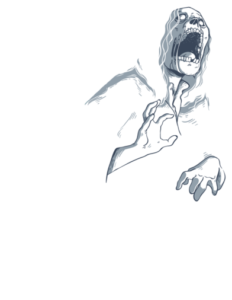
Edinburgh’s Greyfriars Kirkyard is one of the eeriest places in the capital, featuring graves and tombstones of well-known Edinburgh residents of the past. One famous occupant of the graveyard is the Lord Advocate, Sir George Mackenzie, known to many as ‘Bluidy Mackenzie’.
A famous figure in Scottish history, Sir George is known for his persecution of the Covenanters in the 17th century. The Black Mausoleum looms at the back of the Kirkyard, where his body rests.
In recent years, many people believe that his spirit has been re-awoken so will only approach his tomb with great caution.
In the late 1990s, a homeless man entered the tomb, looking for shelter and a place to stay for the night. As he looked around the mausoleum, he decided to break into some caskets and coffins, looking for interesting objects or valuables to steal. Suddenly, a hole opened underneath his feet and he fell into a deep secret chamber filled with bones, skeletons and bodies from hundreds of years ago. The story goes that the man managed to flee the tomb and was never to be seen again. Ever since, the spectre of Sir George Mackenzie has continued to haunt the graveyard, with many other tales and stories reported.
The Mausoleum remains padlocked to this day.
For more scares and frightening fun Take a terrifying ghost tour of Edinburgh’s Old Town at night and get more familiar with tales of the city’s infamous unsavoury characters. Go on, we dare you! Check out the tours from Auld Reekie, Mercat and City of the Dead.
Scotland has more than its fair share of haunted places – and plenty of ghoulish stories to accompany them.
Source:
www.visitscotland.com

